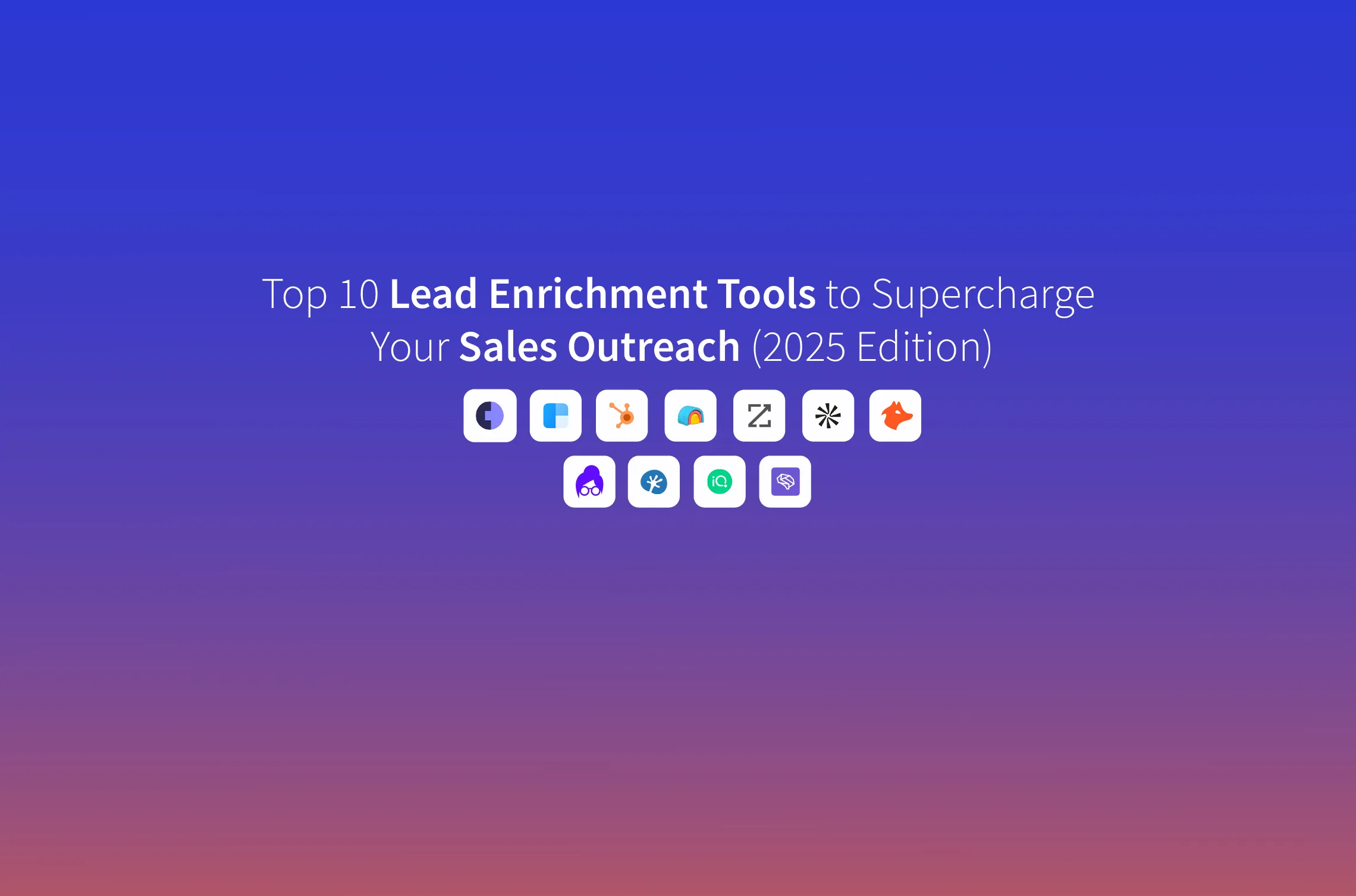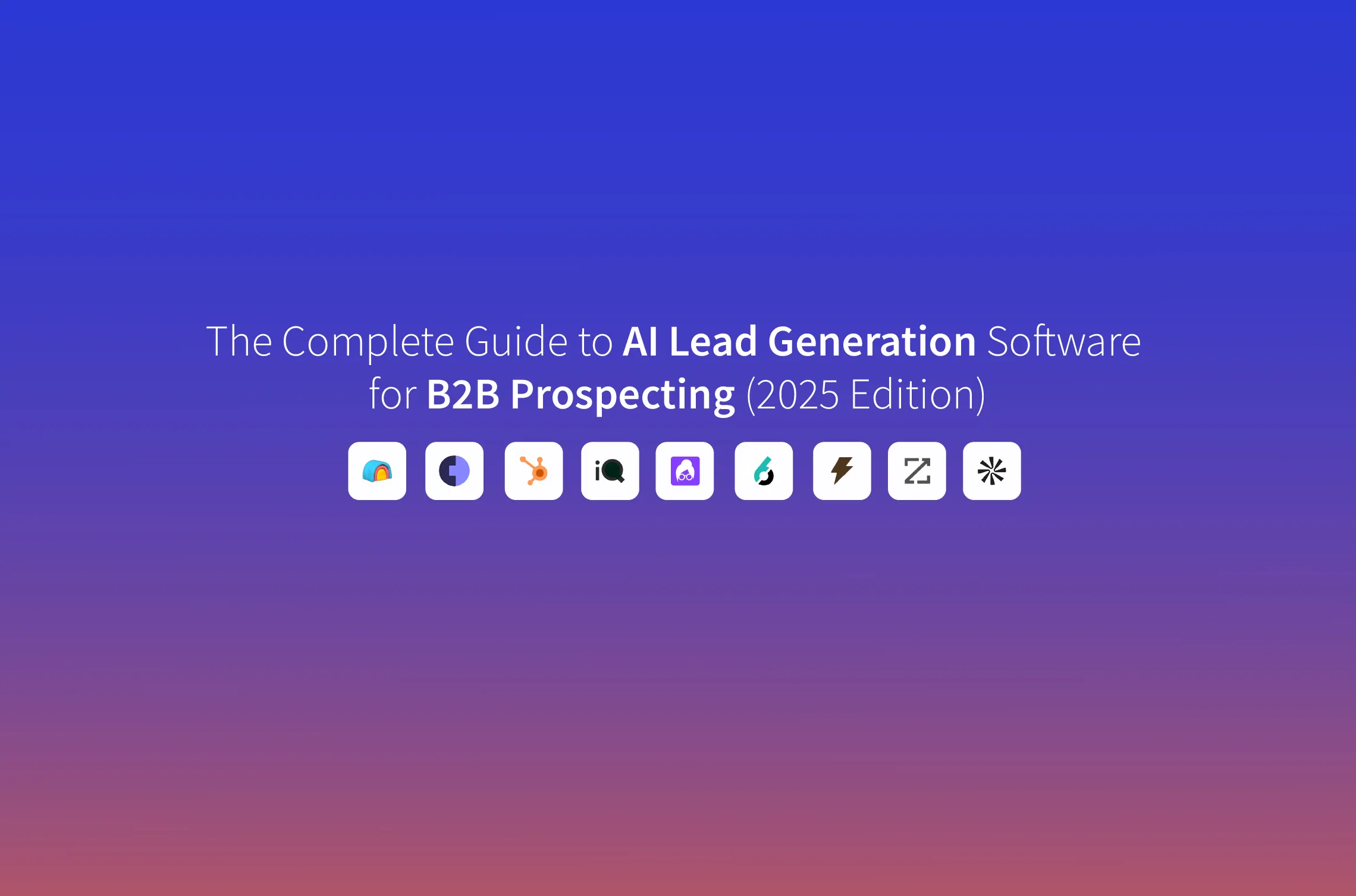Introduction: The Prospecting Revolution in 2025
Sales prospecting has always been the starting line for growth but in 2025, it’s not about how many people you can contact. It’s about how precisely you can identify, qualify, and engage the right buyers before anyone else does.
In a market where buyers are bombarded with hundreds of emails and LinkedIn messages a week, your sales team needs more than persistence. You need intelligence. And that’s where AI sales prospecting is changing the game.
Instead of static spreadsheets and outdated databases, modern sales teams are now leveraging AI-powered tools that:
- Spot real-time buying intent signals before competitors
- Automatically enrich lead data so it’s always accurate
- Prioritize prospects based on likelihood to buy
- Create personalized outreach at scale, without sounding robotic
In this guide, we’ll cover:
- The evolution of sales prospecting in 2025
- How AI transforms the process of finding qualified leads
- The 15 best sales prospecting tools & AI software to use this year
- Step-by-step strategies for implementing these tools in your workflow
- Case studies, pricing, and integrations to help you make the right choice
By the end, you’ll know exactly which platforms to test and how to turn them into a predictable pipeline machine for your team.
The State of Sales Prospecting in 2025
If you ask any VP of Sales, SDR leader, or founder about the biggest sales challenge today, you’ll hear a familiar set of pain points:
- Too much noise — Prospects are overwhelmed with cold outreach, making it harder to stand out.
- Longer sales cycles — Buying committees are larger, requiring multi-threaded engagement.
- Rapid data decay — Contact data becomes outdated within weeks, making static lists obsolete.
- Time wasted on research — SDRs spend hours on manual data gathering instead of selling.
Traditional sales prospecting tools were built for quantity, not quality. The result? Thousands of contacts, but only a fraction are actually ready to buy.
AI sales prospecting tools fix this by:
- Tracking live intent signals (funding, tech installs, leadership changes, hiring trends)
- Automatically verifying and enriching contact info
- Assigning predictive lead scores
- Automating outreach sequences across email, LinkedIn, and calls
- Learning from engagement data to improve over time
Why the Right Sales Prospecting Tool is a Revenue Multiplier
The right platform does more than just give you leads it helps you:
- Increase pipeline without increasing headcount
- Shorten ramp time for new SDRs
- Lower CAC by focusing on high-intent prospects
- Increase win rates with personalized, relevant outreach
- Build a scalable, repeatable outbound motion
If your team still relies on static databases and manual prospecting, you’re leaving deals on the table.
How AI Sales Prospecting Works
At its core, AI sales prospecting is about removing guesswork and replacing it with data-backed precision.
Here’s the flow:
- Signal Detection
Tools scan millions of data points daily to detect buying intent signals like a company raising Series B funding, hiring a new CMO, or installing complementary software. - Lead Enrichment
AI fills in missing details like verified emails, phone numbers, tech stack, employee count, and revenue. - Scoring & Prioritization
Prospects are ranked based on ICP fit and buying readiness. - Personalized Outreach
AI generates unique messaging that references the lead’s context no generic templates or fake personalization. - Multi-Channel Engagement
Email, LinkedIn, calls, video messages, even retargeting ads all coordinated for maximum touchpoint impact. - Learning & Optimization
The system improves over time based on opens, replies, meetings booked, and deals won.
15 Best Sales Prospecting Tools & AI Software in 2025
Below, we’ll break down the best tools in the market their features, pros, cons, pricing, and who they’re best for.
1. DevCommX (Our #1 Recommendation)
Overview:
DevCommX is an AI-powered sales prospecting and GTM automation platform that takes you from signal → booked meeting with zero manual steps. It’s designed for teams that want predictable, scalable pipeline growth without hiring more SDRs.
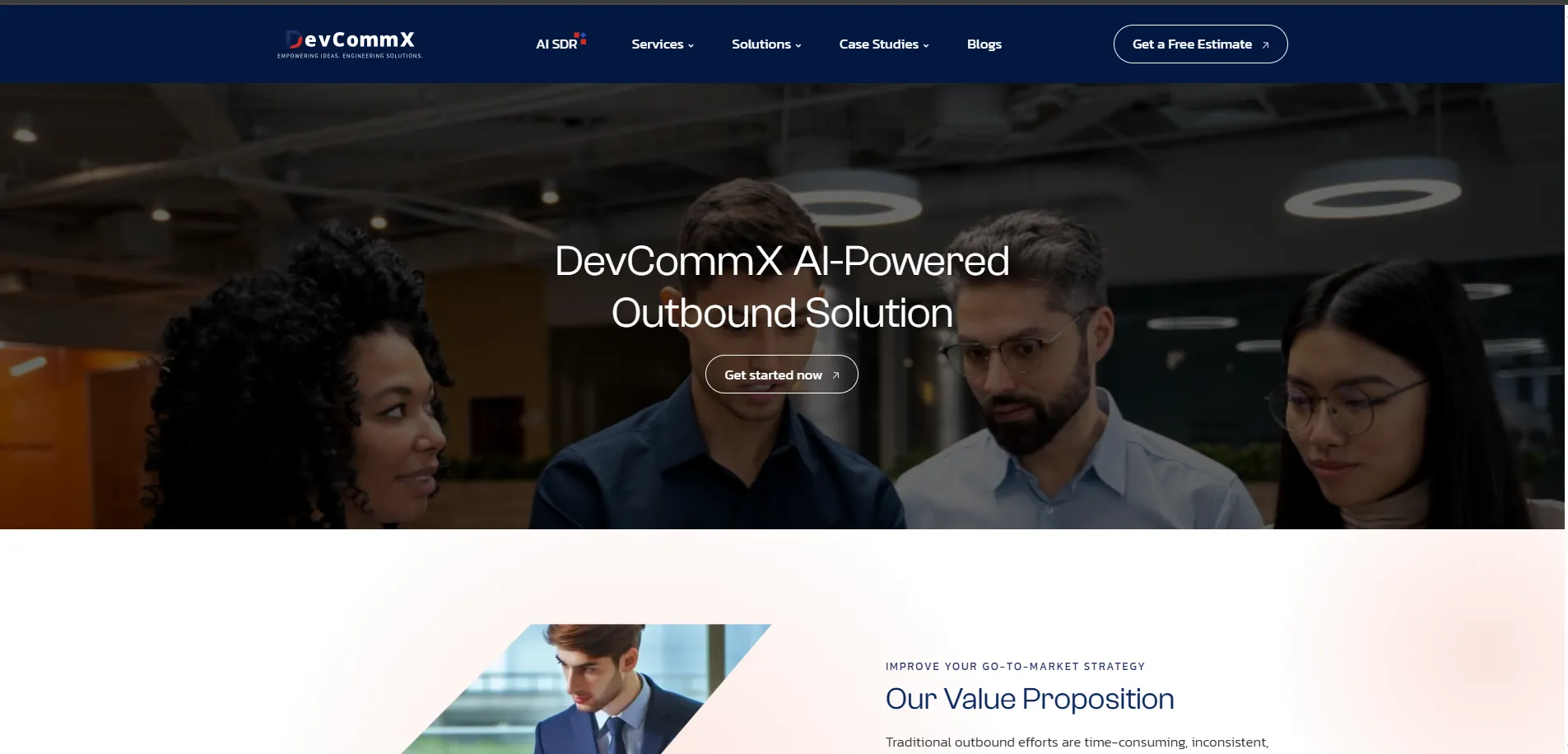
Key Features:
- AI-driven lead scoring based on live signals
- Advanced lead enrichment via integrations with Clay, Apollo, Clearbit
- Multi-channel outreach (email, LinkedIn, calls) in one platform
- Deliverability setup and monitoring to maximize inbox placement
- AI-written personalized messages for each prospect
- Signal-based automation playbooks
Pros:
- Full-cycle AI prospecting in one platform
- Strong deliverability infrastructure
- Works for both outbound and ABM
- Highly customizable workflows
Cons:
- Custom pricing (not self-serve for small teams)
Best For:
- Growth-stage startups
- GTM teams scaling outbound
- Enterprises running multi-vertical campaigns
Integrations: HubSpot, Salesforce, Apollo, Clay, Instantly, Outreach
Pricing: Custom request a GTM Strategy Call.
2. Apollo.io
Overview:
One of the most popular all-in-one sales prospecting tools for startups and SMBs.
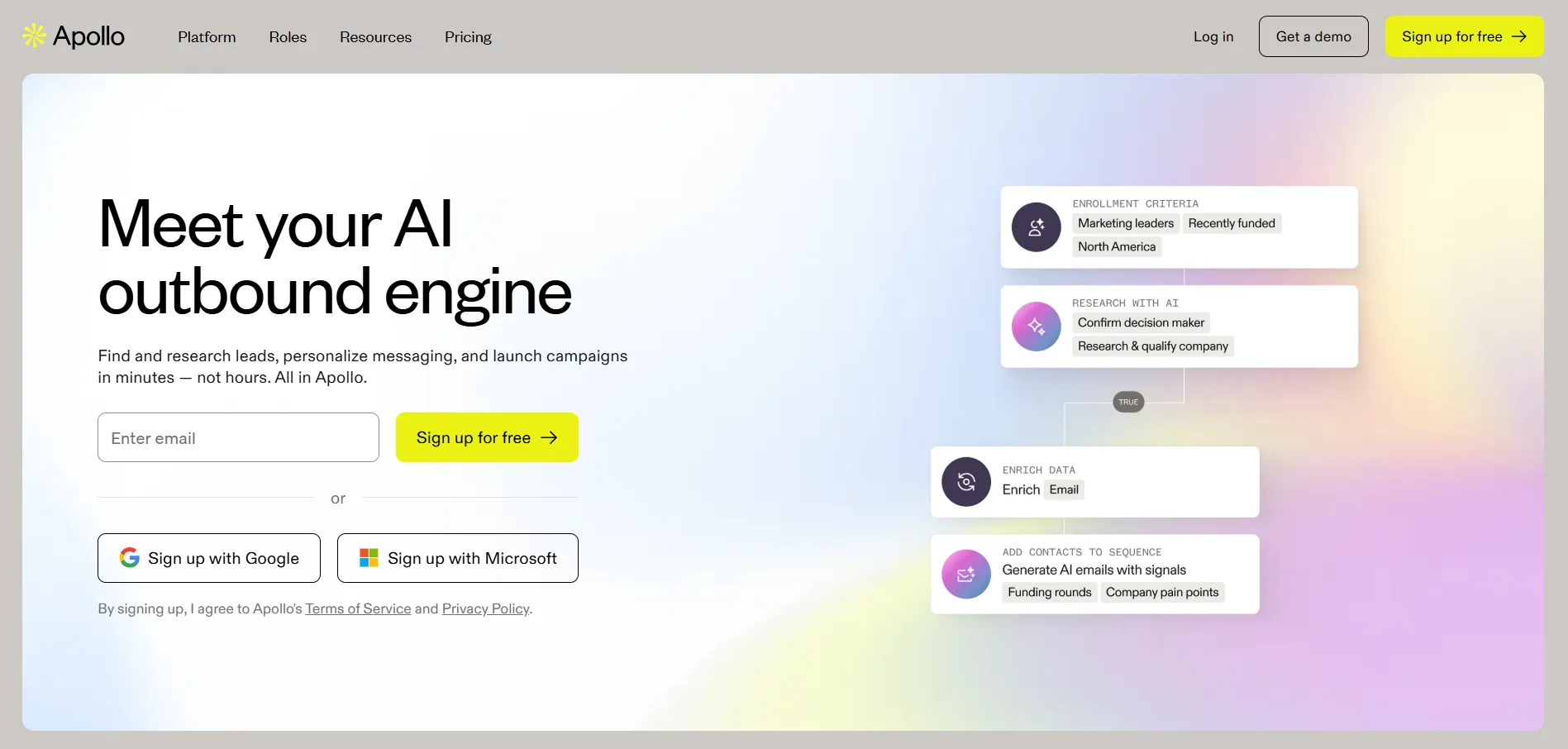
Key Features:
- 275M+ contact database with verified info
- Built-in email sequencing
- CRM sync (Salesforce, HubSpot)
- Engagement tracking
Pros:
- Affordable pricing tiers
- Large, updated database
- Good for small teams starting outbound
Cons:
- Limited AI intent detection
- Database accuracy can vary
Best For: SMBs, early-stage startups
Pricing: Free plan available; paid from $49/month.
3. Clay
Overview:
The ultimate enrichment and automation layer for sales data.
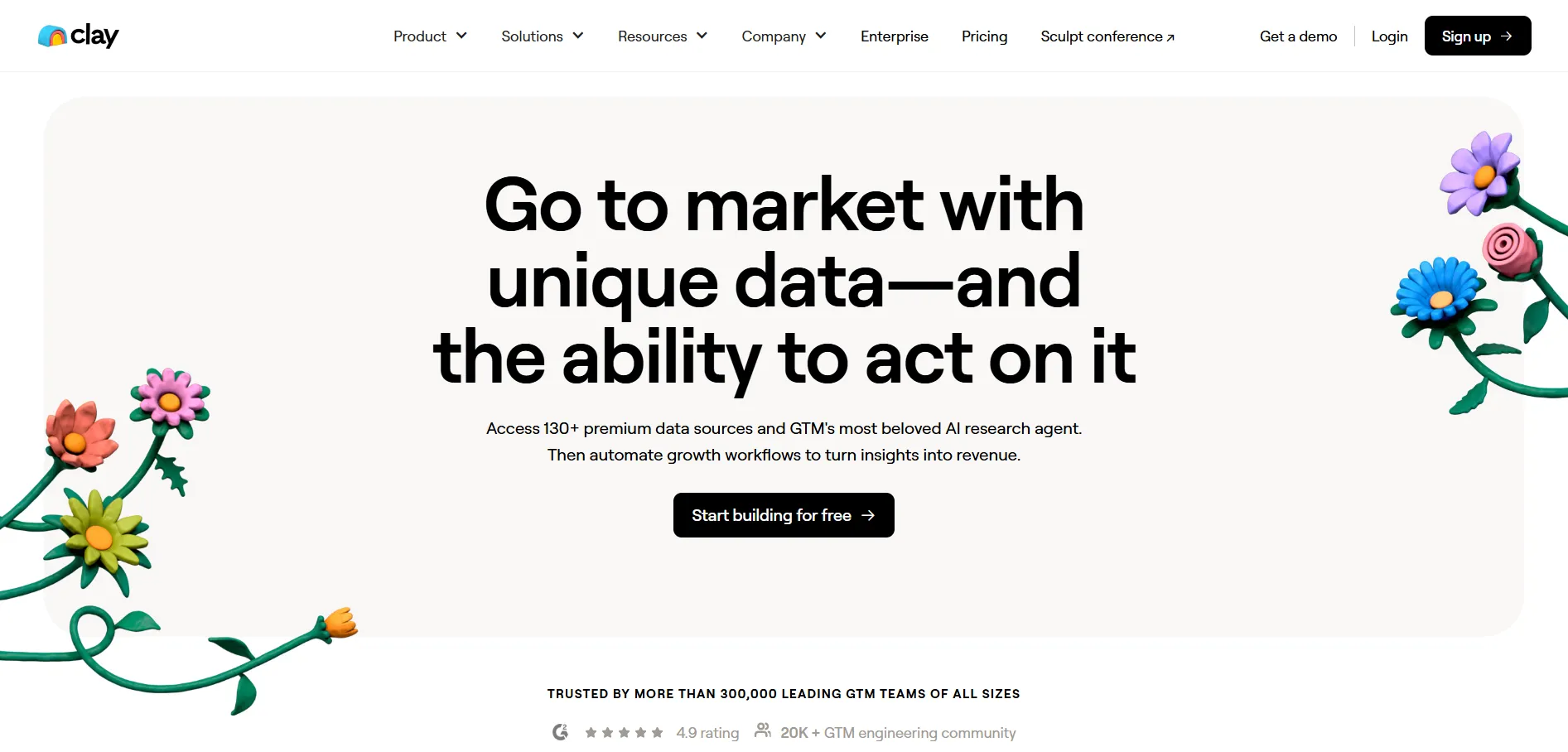
Key Features:
- Pulls data from 50+ APIs
- Advanced filtering for ICP matches
- AI personalization fields
- Native integration with GPT-4
Pros:
- Extremely flexible
- Enrichment-first approach
- Great for ops-heavy teams
Cons:
- Requires setup knowledge
- Outreach needs external tools
Best For: Teams with complex ICP filters
Pricing: From $149/month.
4. Cognism
Overview:
Cognism has built its reputation on being a GDPR-compliant, globally-focused sales prospecting tool that emphasizes data accuracy and compliance a big differentiator in markets like the EU where privacy laws are strict. It’s one of the few platforms that offers intent data, verified contact details, and global coverage without risking legal pitfalls.
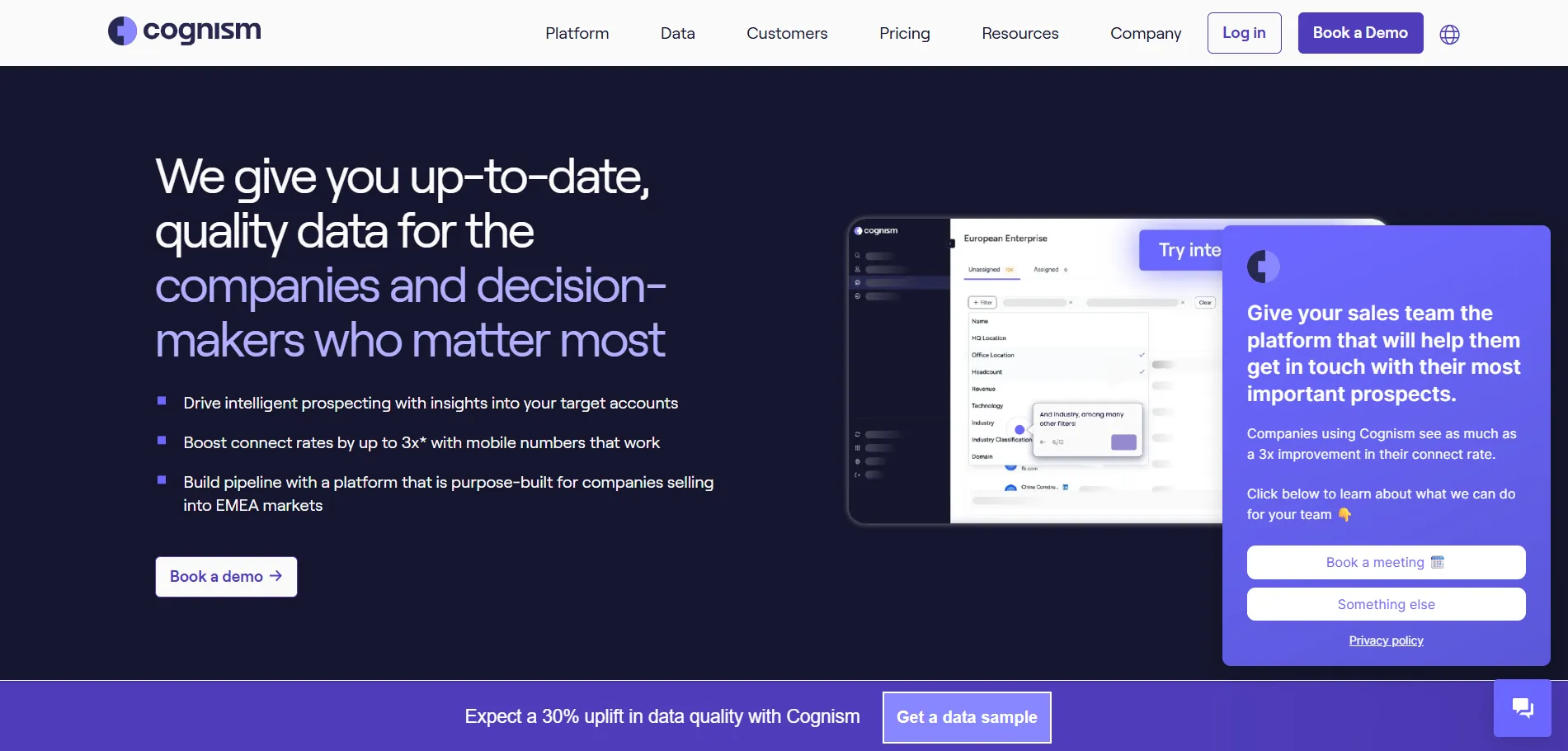
Key Features:
- Diamond Data®: Phone-verified mobile numbers
- Intent data from Bombora integration
- GDPR-compliant B2B contact database
- Real-time data verification
- Outbound email and calling features
- Chrome extension for LinkedIn prospecting
Pros:
- GDPR & CCPA compliant
- Strong focus on data accuracy
- Reliable global data coverage
- Built-in intent signals
- Works well for enterprise teams in regulated markets
Cons:
- Pricing is on the higher end
- Less flexibility for enrichment workflows compared to Clay
Best For:
- Enterprise teams selling into multiple countries
- Businesses in regulated industries
- Companies needing mobile numbers for cold calling
Pricing: Custom quote based on seats and data usage.
5. ZoomInfo
Overview:
ZoomInfo remains one of the most well-known names in sales prospecting. While some teams have moved away due to high costs, it’s still a powerhouse in terms of database size, integrations, and advanced filtering capabilities.
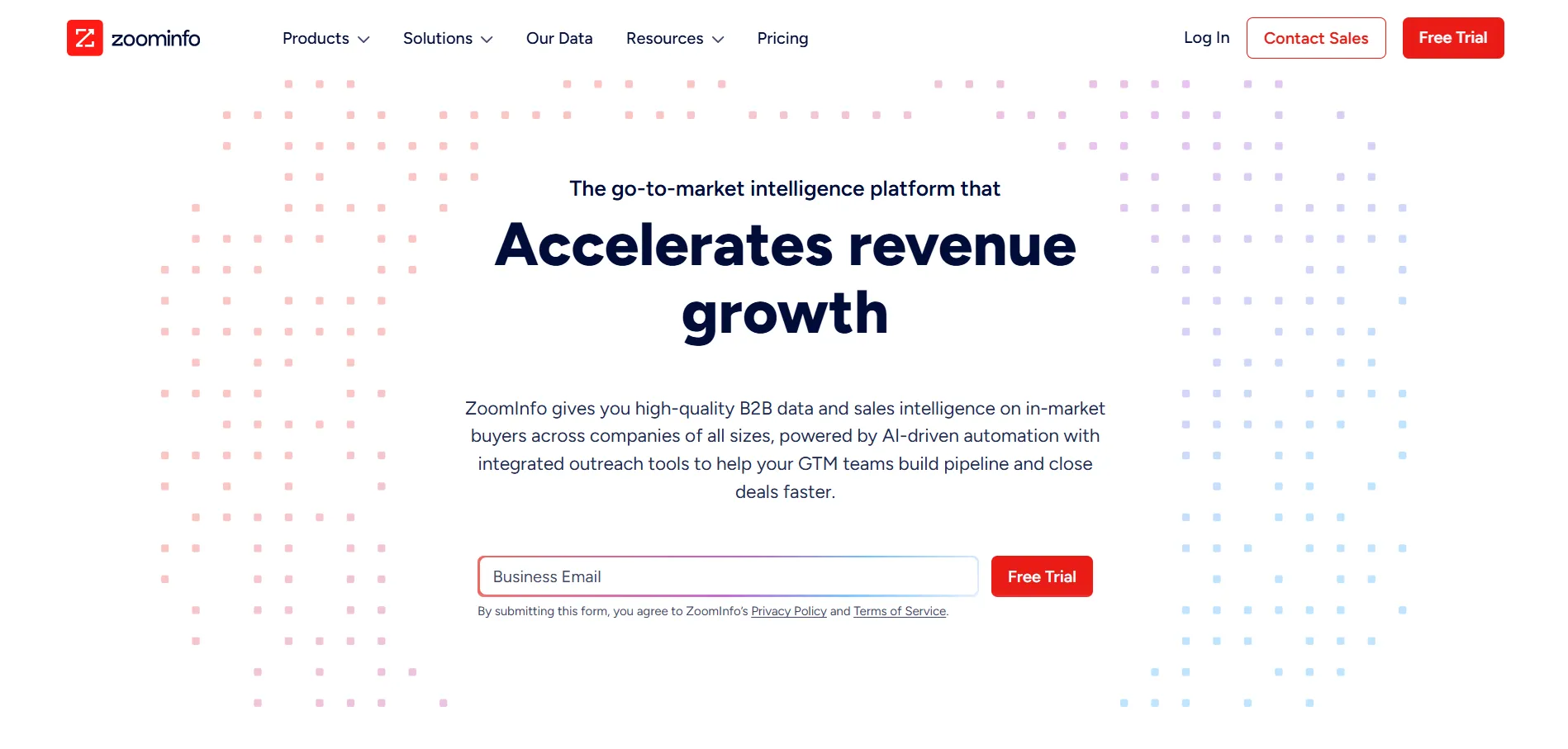
Key Features:
- 235M+ contacts and 50M+ companies
- Intent signals via proprietary Scoops data
- Technographics, org charts, direct dials
- Native integrations with CRM and marketing automation
- Workflow automation for lead routing
Pros:
- Extremely large database
- Rich firmographic & technographic data
- Comprehensive integrations
Cons:
- Expensive (often $20K–$40K/year)
- Data accuracy can be inconsistent
- Static database model means some leads are stale
Best For:
- Large outbound sales teams
- Companies needing deep company insights
- B2B enterprises with big outbound budgets
Pricing: High-tier pricing; typically enterprise contracts.
6. Instantly.ai
Overview:
Instantly.ai has exploded in popularity among bootstrapped founders, small SDR teams, and agencies because it offers unlimited email sending accounts for one flat fee ideal for scaling cold email outreach without worrying about per-lead pricing.
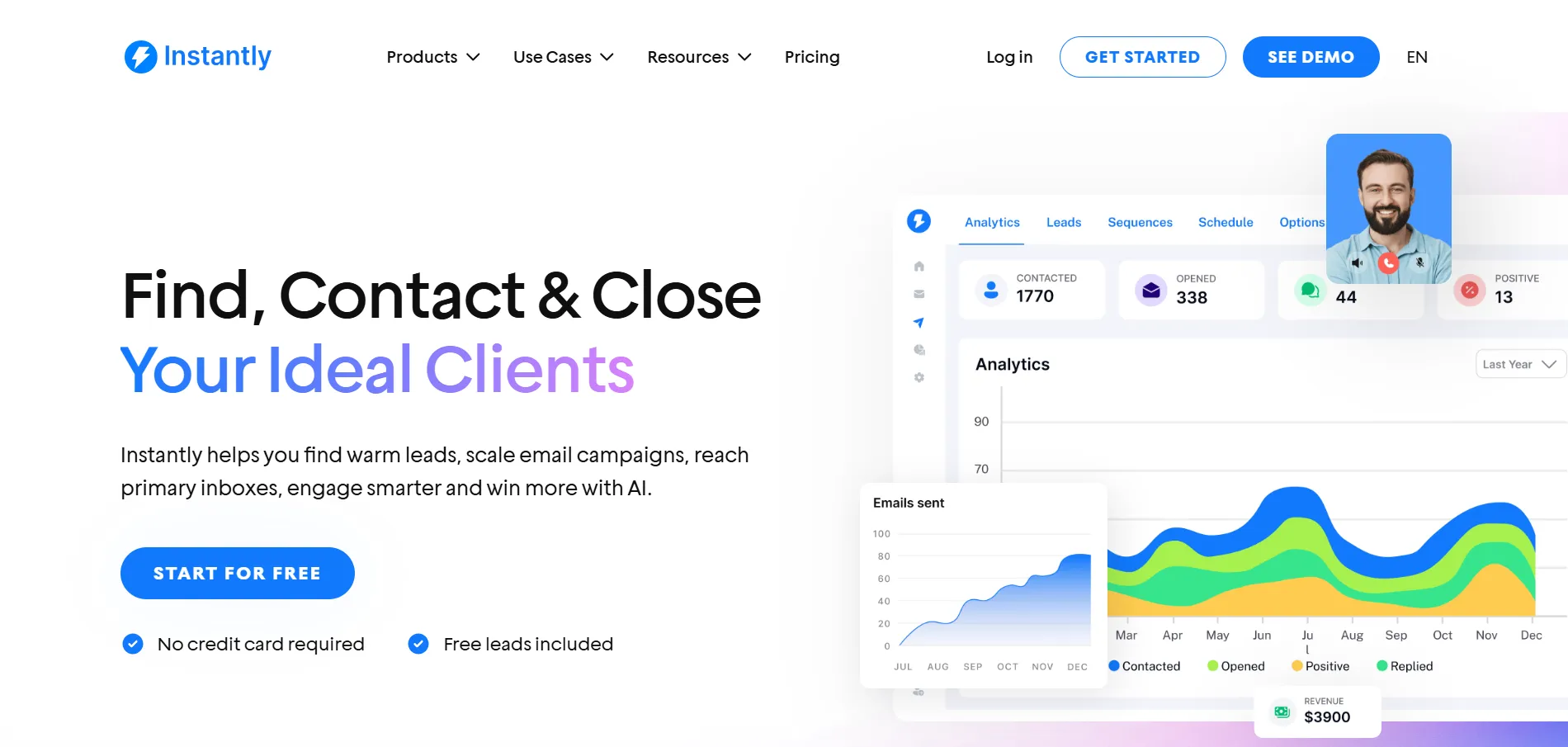
Key Features:
- Unlimited email sending accounts
- Warm-up features to protect deliverability
- Automated follow-up sequences
- Inbox rotation for higher deliverability
- Detailed campaign analytics
Pros:
- Cost-effective for volume senders
- Built-in deliverability tools
- No per-contact fees
Cons:
- No database or intent signals (needs enrichment tool)
- Limited personalization compared to AI-first platforms
Best For:
- Agencies running outreach for clients
- Founders scaling cold email campaigns
- Small teams prioritizing email over multi-channel
Pricing: From $37/month.
7. SalesIntel
Overview:
SalesIntel’s standout feature is its human-verified contact data ensuring you’re not wasting time on bounced emails or outdated info. It also offers intent data, technographics, and seamless CRM integrations.
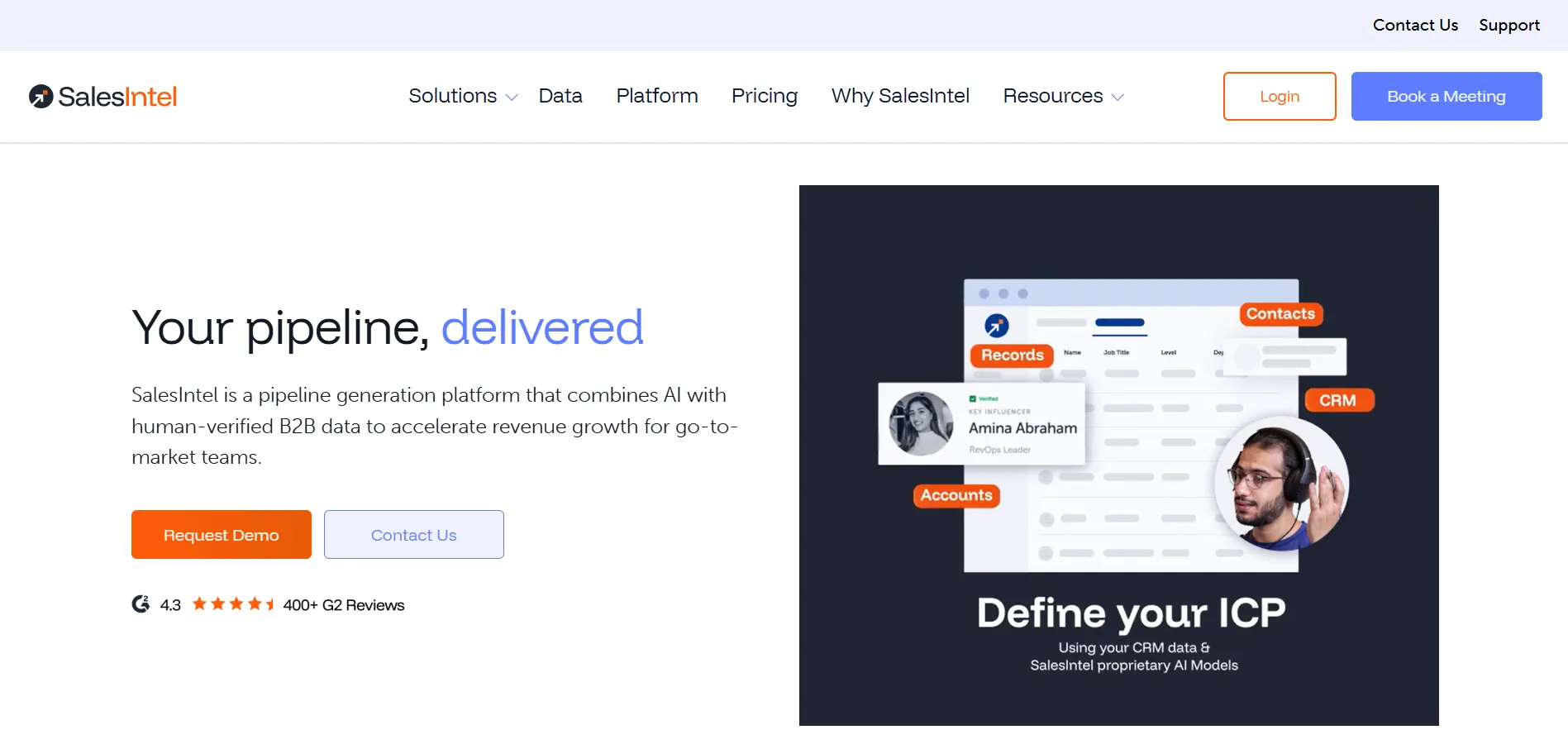
Key Features:
- Human-verified contacts updated every 90 days
- Buyer intent data via Bombora
- Technographics and firmographics
- Chrome extension for quick prospecting
- Data enrichment API
Pros:
- High accuracy rate
- Frequent data refreshes
- Strong intent + technographic combo
Cons:
- Smaller database compared to ZoomInfo
- Not as automation-focused as Clay or DevCommX
Best For:
- Teams frustrated with high bounce rates
- Companies needing verified phone numbers and emails
Pricing: Custom quote.
8. Clearbit
Overview:
Clearbit is best known as an API-first data enrichment platform that integrates deeply with your CRM, marketing automation, and outbound workflows. It’s often used to enrich inbound leads and segment outbound lists in real time.
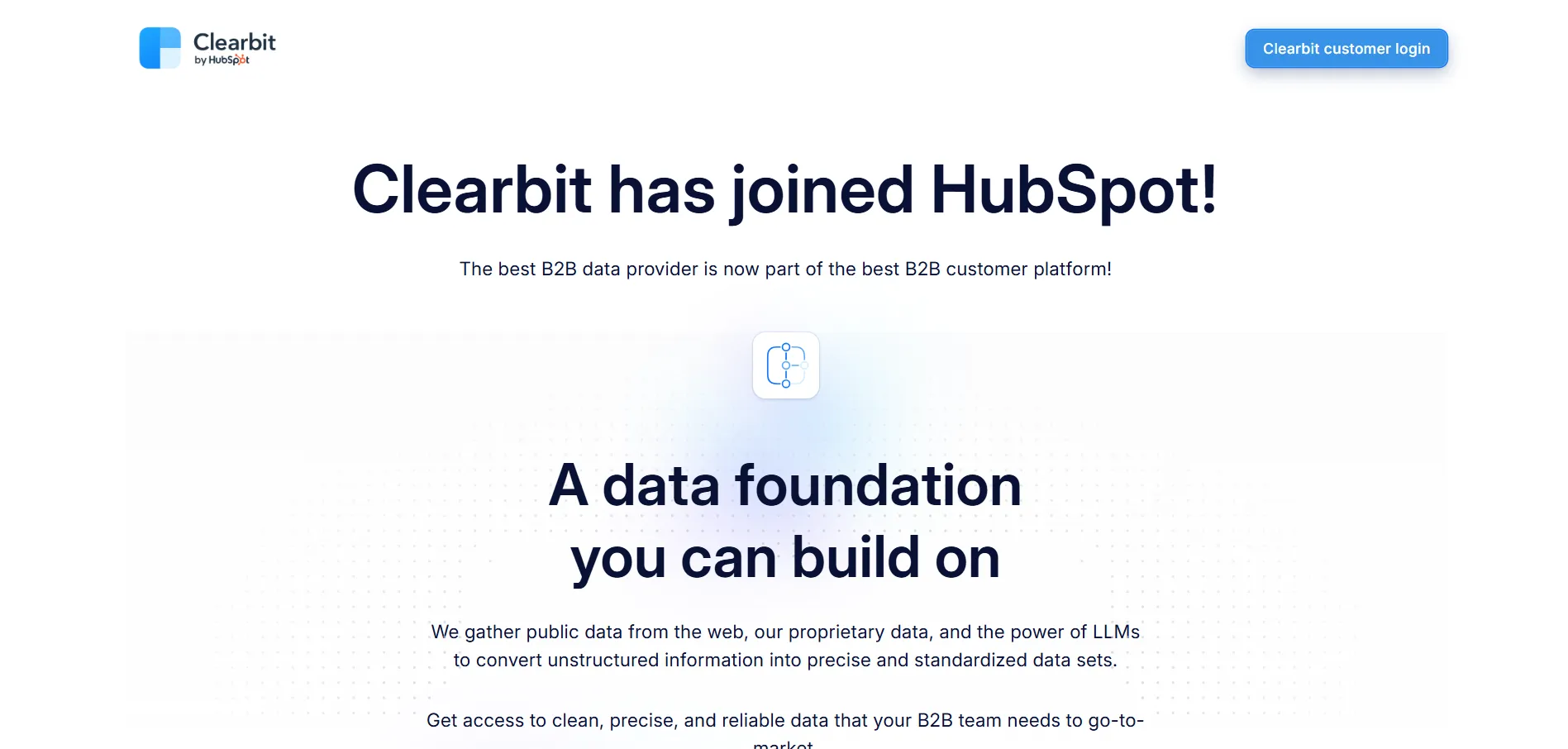
Key Features:
- Real-time enrichment from 100+ public and proprietary sources
- Company, contact, and technographic data
- Reveal anonymous website visitors
- Fit and intent scoring
- Custom audience building for ads
Pros:
- API-first approach integrates anywhere
- Real-time updates
- Great for both inbound and outbound segmentation
Cons:
- No native outreach sequences
- Requires other tools for direct prospecting
Best For:
- SaaS companies running ABM campaigns
- Revenue teams enriching inbound + outbound leads
Pricing: Custom, API-based billing.
9. LeadIQ
Overview:
LeadIQ is all about speed-to-prospect it allows SDRs to capture leads directly from LinkedIn and enrich them instantly with verified contact info.
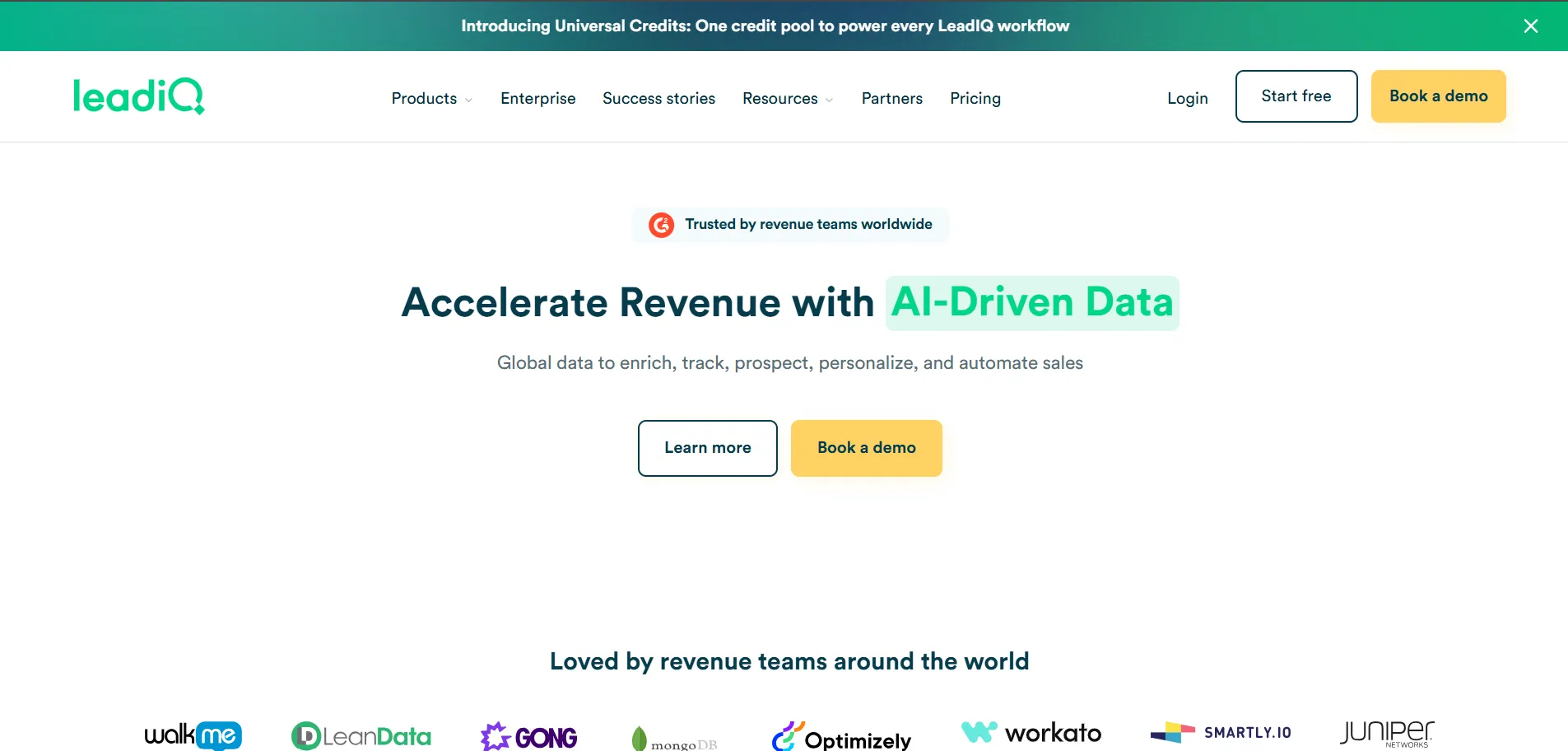
Key Features:
- One-click capture from LinkedIn
- Enrichment with verified email and phone
- Integration with major CRMs
- Team-wide prospecting analytics
Pros:
- Simple, fast, intuitive
- Great for reps who live on LinkedIn
- Accurate contact data
Cons:
- Limited database compared to Apollo
- Mostly manual prospecting, no deep AI signals
Best For:
- SDRs doing targeted account-based outreach
- Teams that want to speed up manual prospecting
Pricing: From $75/user/month.
10. Amplemarket
Overview:
Amplemarket is a multi-channel outbound automation platform that combines email, LinkedIn, and calling into one workflow with built-in AI personalization.
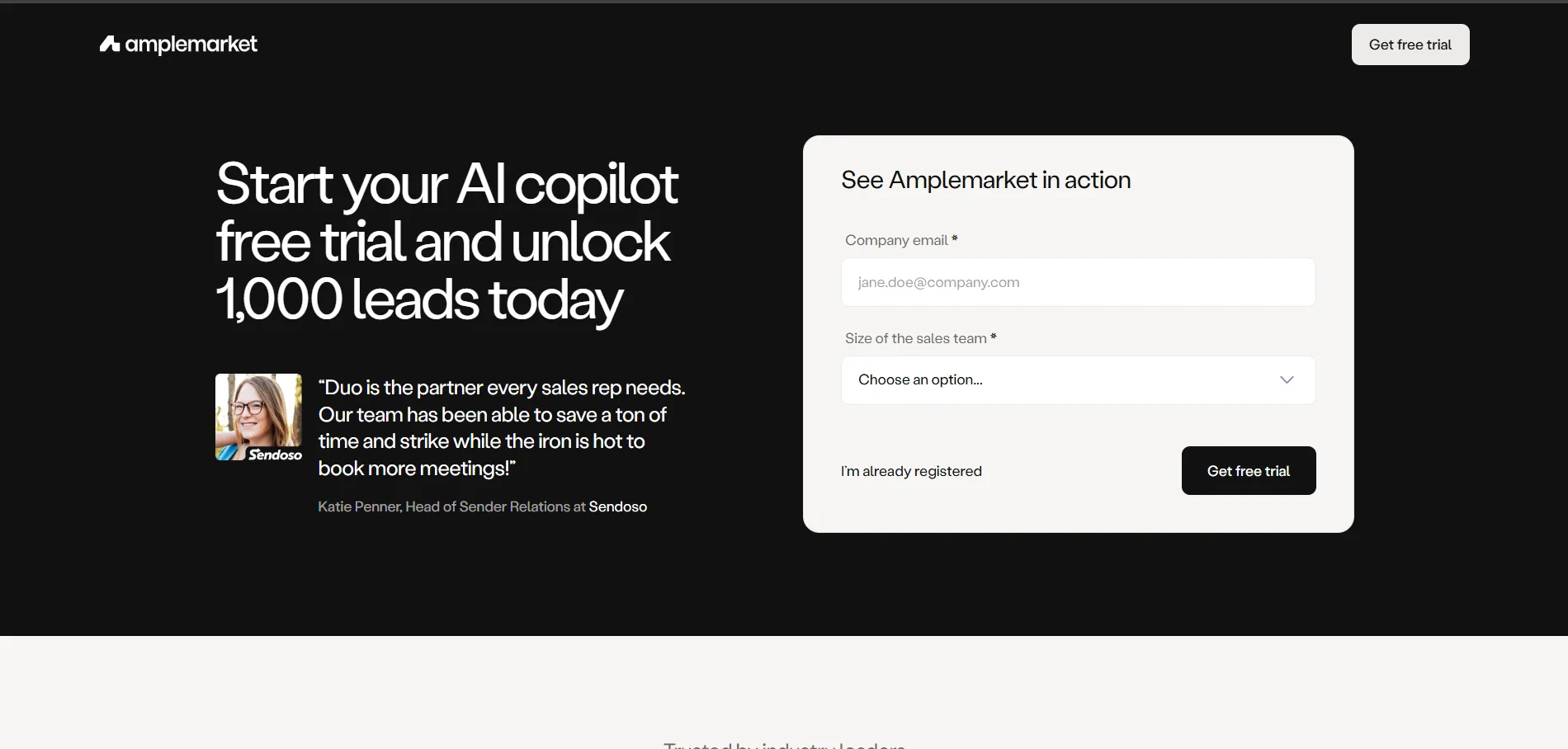
Key Features:
- Multi-channel sequences (email, LinkedIn, calls)
- AI-powered copywriting
- Lead scoring and prioritization
- Automated A/B testing
- CRM sync
Pros:
- Strong multi-channel capabilities
- AI-first outreach personalization
- Built-in analytics
Cons:
- Smaller user base than Outreach or Salesloft
- Fewer third-party integrations
Best For:
- Teams wanting to run LinkedIn + email in one place
Pricing: From $99/user/month.
11. Outreach.io
Overview:
Outreach.io is one of the most powerful enterprise sales engagement platforms known for its automation depth, analytics, and ability to support large SDR teams.

Key Features:
- Advanced sequencing and branching logic
- AI-powered rep coaching
- Deal management features
- Pipeline analytics
- Native dialer and voice features
Pros:
- Extremely robust
- Great for enterprise coordination
- Deep Salesforce integration
Cons:
- Overkill for small teams
- Higher learning curve
Best For:
- Enterprise sales orgs with large SDR teams
Pricing: From $100/user/month.
12. Salesloft
Overview:
Salesloft is another leader in sales engagement, with a strong focus on cadence management and AI coaching.

Key Features:
- Multi-channel cadences
- AI-assisted messaging suggestions
- Conversation intelligence
- Pipeline management
Pros:
- Intuitive UI
- Strong call recording and analysis tools
- Great for mid-to-large teams
Cons:
- Expensive for smaller orgs
- Fewer enrichment features
Best For:
- Mid-market to enterprise outbound teams
Pricing: From $125/user/month.
13. HubSpot Sales Hub
Overview:
HubSpot’s Sales Hub combines CRM functionality with lightweight sales engagement features, making it ideal for teams that want prospecting + CRM in one platform.

Key Features:
- CRM with contact/company records
- Email sequences and templates
- Deal pipeline tracking
- Meeting scheduling
- Live chat and chatbot tools
Pros:
- All-in-one CRM + sales engagement
- Easy to use
- Great reporting
Cons:
- Lighter intent/enrichment than dedicated tools
Best For:
- SMBs and startups that want an integrated solution
Pricing: Free tier available; paid from $45/month.
14. LinkedIn Sales Navigator
Overview:
LinkedIn Sales Navigator remains a must-have for social selling and highly targeted account research.
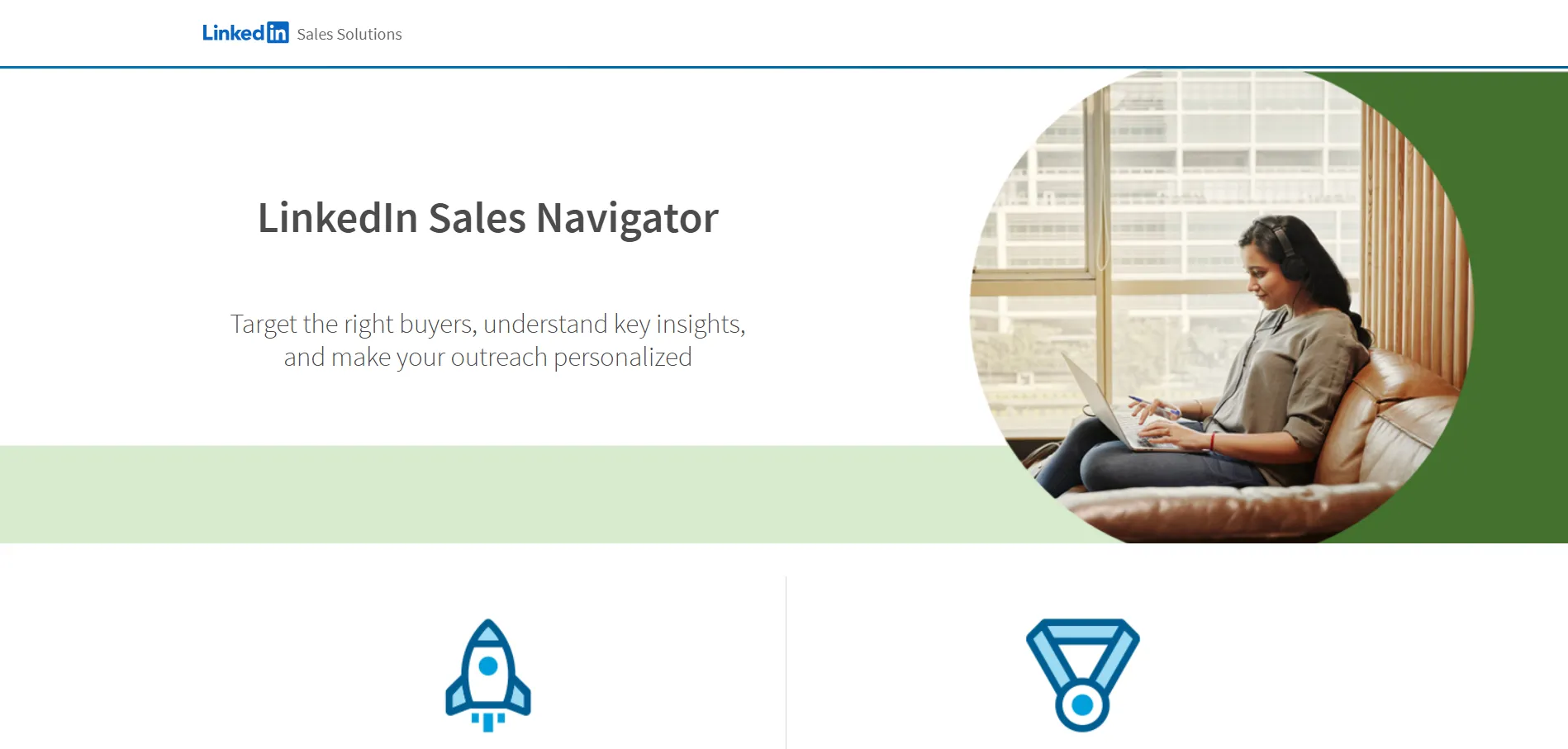
Key Features:
- Advanced lead and account search
- Real-time job change alerts
- Recommended leads
- InMail messaging
- Integration with CRMs
Pros:
- Best for relationship-driven outreach
- Up-to-date job and role changes
- Huge professional network
Cons:
- No email/phone data
- Needs other tools for enrichment and sequencing
Best For:
- Account-based prospecting
- Social selling strategies
Pricing: From $99/month.
15. Warmly.ai
Overview:
Warmly.ai is an AI-powered prospecting companion that helps sales teams personalize outreach at scale by surfacing warm introductions, shared connections, and real-time buyer insights - all before you hit send.
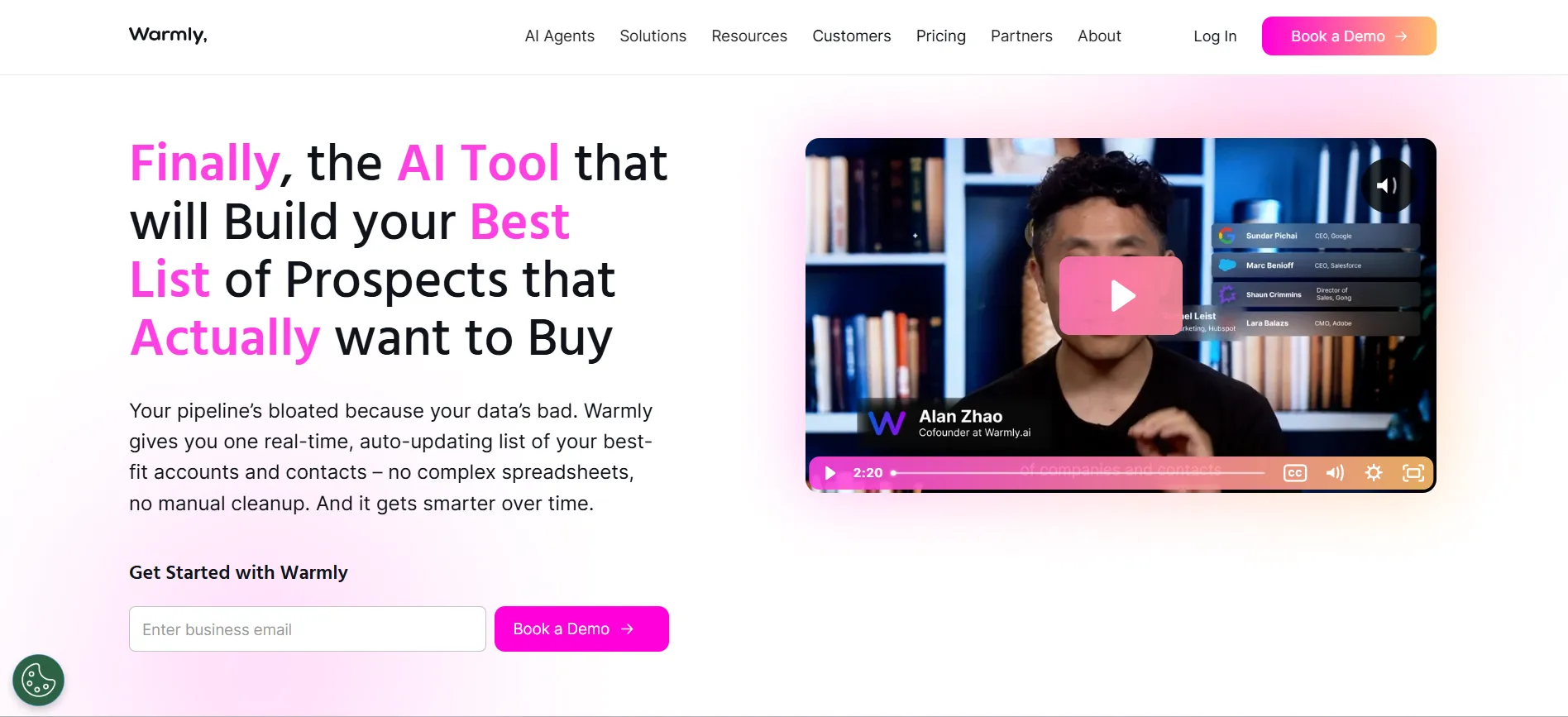
Key Features:
- AI-driven contact enrichment and warm intro suggestions
- Real-time insights from company news, hiring trends, and funding updates
- Smart reminders for reconnecting and follow-ups
- Meeting intelligence and engagement summaries
- Native integrations with LinkedIn, HubSpot, Salesforce, and Gmail
Pros:
- Adds human context to cold outreach
- Boosts reply rates with personalized touchpoints
- Lightweight and easy to integrate into existing workflows
Cons:
- Not a complete prospecting database
- Works best alongside enrichment or outreach tools like Clay or Smartlead
Best For:
- Reps who rely on personalization to build relationships
- SDRs and AEs running multi-channel outreach campaigns
Pricing:
Free plan available; paid plans start around $29/month per user.
Comparison Matrix: Top 15 Sales Prospecting Tools at a Glance
Buyer’s Guide: How to Choose the Right Sales Prospecting Tool in 2025
Choosing a sales prospecting tool isn’t just about the database size it’s about fit, workflow, and ROI. Here’s a framework to evaluate options:
1. Define Your Primary Prospecting Channel
- If email is your main outreach channel → Apollo, Instantly.ai, or Clay.
- If social selling is your focus → LinkedIn Sales Navigator + LeadIQ.
- If multi-channel is key → DevCommX, Outreach, or Amplemarket.
2. Evaluate Data Accuracy & Freshness
Data accuracy directly impacts bounce rates, domain reputation, and pipeline velocity. Aim for 90%+ verified accuracy.
- Best Accuracy → SalesIntel, Cognism, DevCommX, Warmly.ai
3. Check AI Capabilities
AI in sales prospecting should go beyond basic personalization it should:
- Spot buying intent
- Prioritize leads by fit + timing
- Suggest tailored outreach sequences
Best AI → DevCommX, Clay, Amplemarket, Warmly.ai
4. Consider Integration Depth
Look for tools that natively connect to:
- CRM (HubSpot, Salesforce, Pipedrive)
- Email warm-up tools
- Ad platforms for retargeting
5. Match Pricing to Your Scale
Don’t overspend on an enterprise database if you’re running a lean outbound motion.
Advanced AI Sales Prospecting Strategies to Drive Qualified Leads
2025 is the year AI-first prospecting officially outpaces manual methods. Here’s how to maximize results:
1. Layer Multiple AI Signals
Use 3+ data points per lead:
- Firmographics (company size, revenue)
- Technographics (software they use)
- Intent data (content engagement, hiring trends)
2. Automate Lead Scoring
Platforms like DevCommX use predictive scoring to surface the top 5% of leads most likely to convert. This ensures SDRs spend time where it matters.
3. AI-Powered Personalization at Scale
Move beyond {{FirstName}} reference:
- Their latest LinkedIn post
- Industry news relevant to them
- Recent company announcements
4. Real-Time ICP Alerts
Use Clay or Clearbit to trigger alerts when a lead meets your ICP criteria right now e.g., they just raised Series B funding.
5. Warm Up Every Lead Before Outreach
Leverage retargeting ads, LinkedIn engagement, and content touches before your first cold email.
FAQs
Q1. What is the difference between sales prospecting and lead generation?
Sales prospecting is the process of actively identifying and reaching out to potential customers. Lead generation is broader it includes any activity that attracts potential customers, inbound or outbound.
Q2. What’s the best AI sales prospecting tool for SMBs?
Apollo.io or Instantly.ai offer the best balance of cost and capability for small to mid-sized teams.
Q3. Which sales prospecting tools integrate best with HubSpot?
DevCommX, Apollo, and Clearbit have native HubSpot integrations.
Q4. How does AI improve lead quality?
AI analyzes multiple data points, intent signals, and historical patterns to prioritize leads most likely to buy.
Q5. Should I use more than one sales prospecting tool?
Yes many teams pair a database tool (Apollo) with an enrichment tool (Clearbit) and an engagement platform (Outreach).
Q6. What’s the average ROI of AI sales prospecting?
According to industry data, AI-driven prospecting can boost qualified lead volume by 35–50% in the first year.
Q7. Are free sales prospecting tools worth it?
Free tools are good for early experimentation but often lack verified data and automation features.
Q8. How do I protect my domain reputation while prospecting?
Warm up your sending domain, maintain low bounce rates (<3%), and use tools like NeverBounce.
Q9. Which tool is best for global prospecting?
Cognism and DevCommX offer strong global coverage with compliance in mind.
Q10. How often should I refresh my prospect lists?
At least every 90 days to keep data fresh and reduce bounce rates.
Conclusion
In 2025, the best sales prospecting tools aren’t just databases they’re AI-driven decision engines that surface the right lead at the right time with the right message. Whether you’re an SMB scaling outbound or an enterprise running global ABM campaigns, the combination of accurate data, intent signals, and AI personalization will determine your success in driving qualified leads.
DevCommX stands out for teams wanting AI-first, signal-based prospecting that integrates directly into the GTM workflow eliminating wasted effort and focusing only on high-intent opportunities.
Planning your next GTM move? Get a quick audit of your sales, outbound, and RevOps systems.
Let’s Build Your Revenue Engine Together
Replace manual prospecting with intelligent automation.
Let your sales team focus on closing.



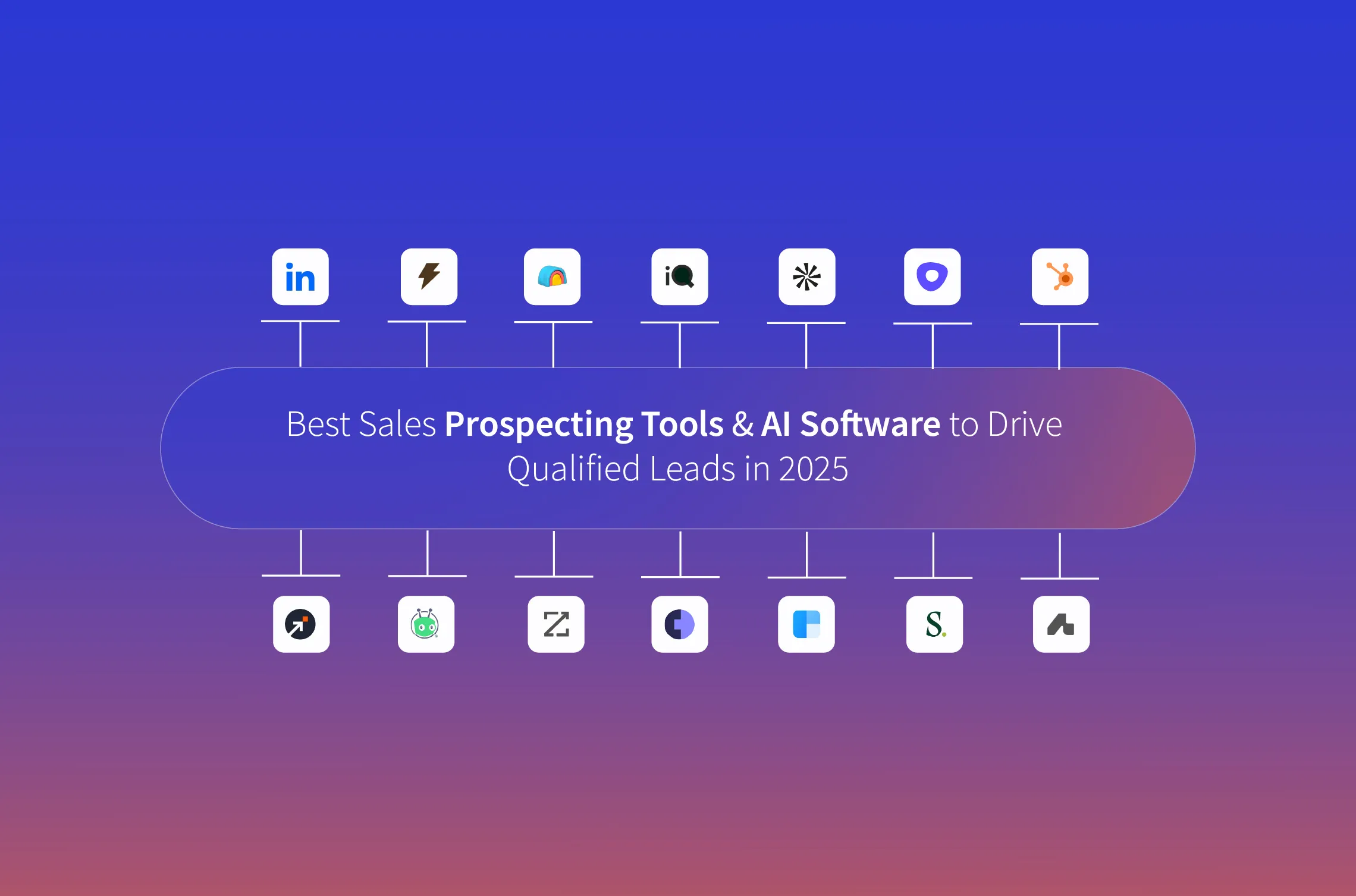
.webp)

